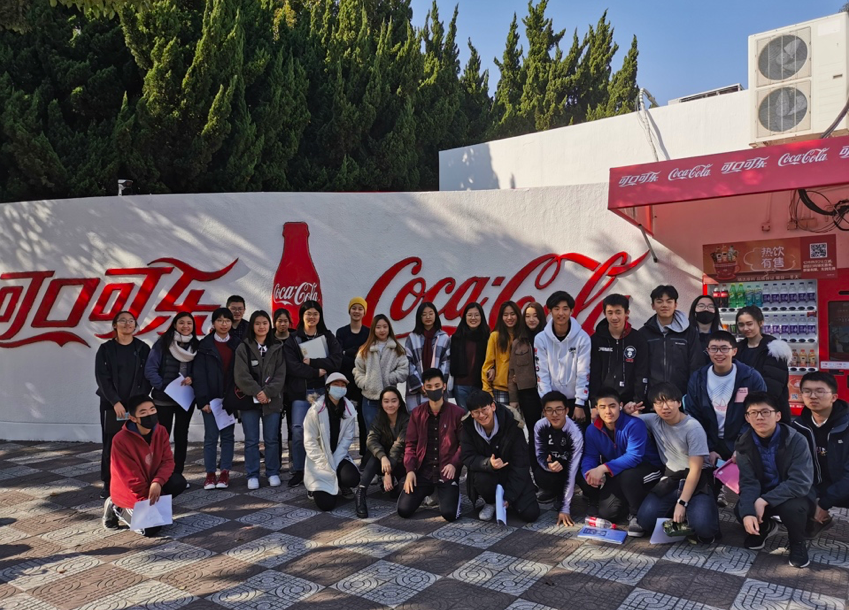Coca Cola Factory: Business Chinese meets beverage giant
On December 13, 2019, the Business Chinese students officially lost any semblance of childhood wonder. Upon visiting the Coca Cola packaging factory for a field trip, the students were faced with the following facts: One, the jolly red Santa Claus we know today was a creation by Coca Cola for marketing, which quite literally worked like magic. Two, Coca Cola isn’t magically made in the North Pole and enjoyed by cute polar bears like in the animated commercials. Instead, Coca Cola is a mass-produced beverage giant that owns several other companies including Fanta, Sprite, Vitamin Water, and even Minute Maid—none of which are in the North Pole. Using highly efficient machine-powered assembly lines, one production line can produce more than a hundred thousand bottles per day, only needing three technicians to oversee the process. Business Chinese students got to observe the machinery first-hand at the factory. Although it was under maintenance that day, students were still awed by the sheer scale of it all.

The highly efficient production process has certainly yielded outstanding results— the company sells beverages in over 200 countries, and more than 50 billion Coca Cola beverage servings are consumed daily. It’s difficult to fathom the financial success that the company has had.
With so much production, however, Coca Cola alone yields massive amounts of plastic waste. As ethical and sustainable consumption is becoming a larger priority for consumers today, this is a topic that must be addressed by the company—and it has been. To combat plastic waste, a goal for Coca Cola is to collect and recycle 100% of its bottles by 2030, and to implement environmentally friendly, biodegradable bottles made from plant-based resin. The company even recently introduced bottles made with plastic recycled from the ocean. “Consumers around the world care about our planet, and they want and expect companies to take action,” CEO James Quincey said. “That’s exactly what we’re going to do, and we invite others to join us on this critical journey.”

As Coca Cola bears this global responsibility being a world-renowned beverage company, Business Chinese students also got to learn the marketing techniques used when targeting demographics across the globe. An example would be appealing to Chinese consumers by incorporating zodiac signs on bottle designs, or using popular Chinese internet slang in advertising to appeal to Chinese teenagers. It is these sensibilities to different cultures and an overall creative approach to advertising that seems to set Coca Cola apart from other companies, even if the beverage itself is easy to replicate. When asked how they felt about their competitor Pepsi, which practically has the same taste as coke, they expressed their gratitude for such a challenge. Without competition, they don’t believe they would have pushed the company to the level it has reached today.

As the field trip came to an end, Business Chinese students had one last thing in store for them: free drinks. To everyone’s amusement, there was no Coca Cola left to serve, only Fanta and Sprite— tasty nonetheless. The students may have had childhood memories of Santa Claus tainted forever by capitalism, but they left with their heads full of marketing techniques and Coca Cola history facts, and bellies full of fizzy drinks. How could you ask for more?

Featured Image—The Business Chinese classes posing outside of the Coca Cola Factory Courtesy of Mrs. Madison Li
by Jessie Wu

